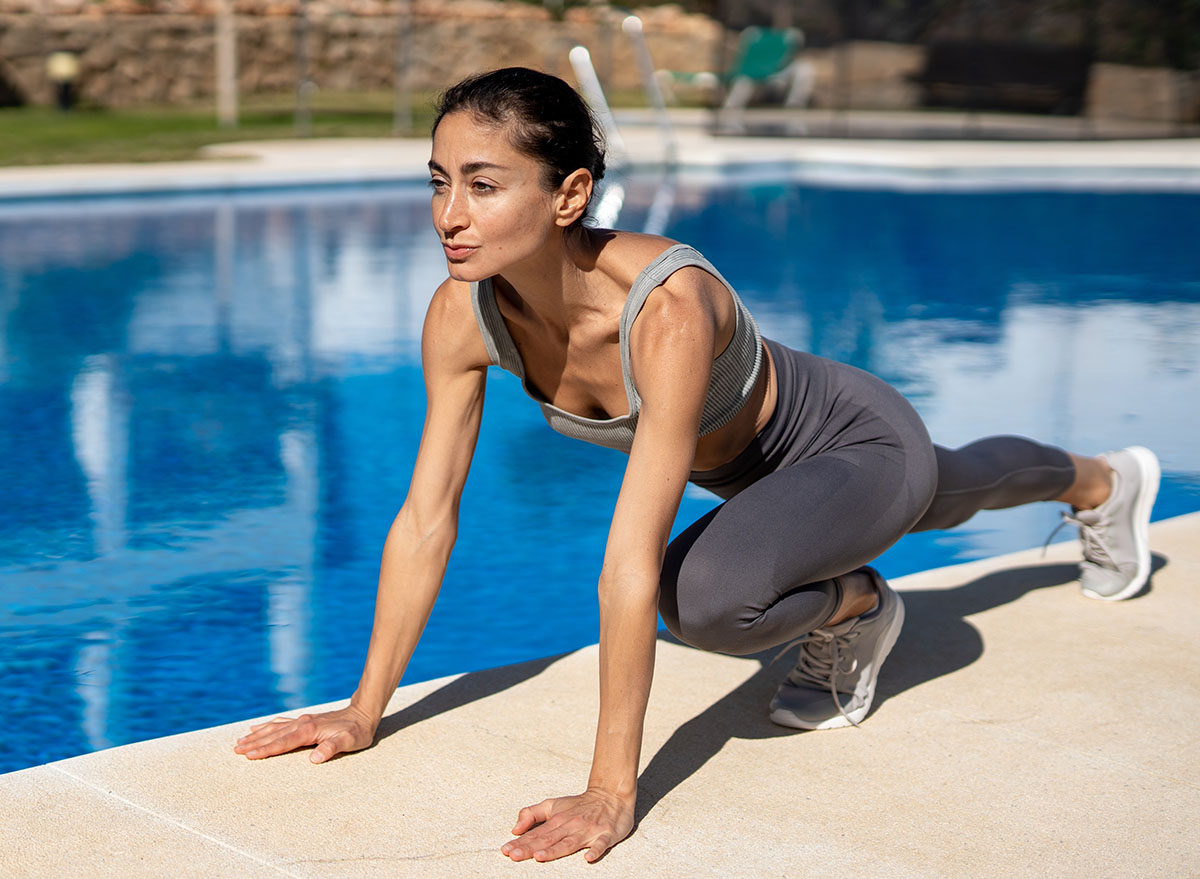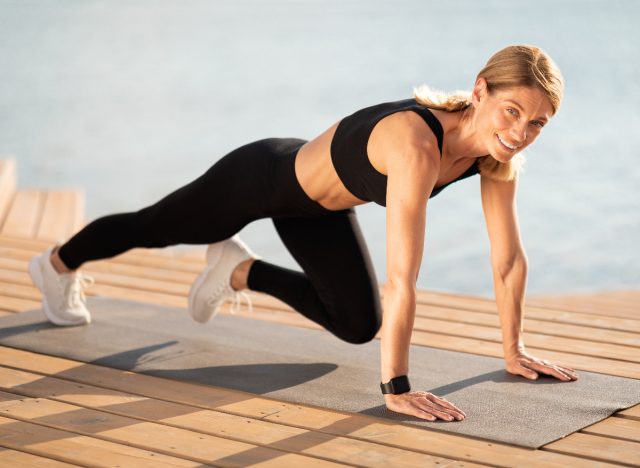5 No-Equipment Exercises That Strengthen Your Core Faster Than Planks After 40

A strong core comes from intentional training that challenges your abs to stabilize, rotate, resist rotation, and support your spine through every direction you move. When you target these abilities consistently, your entire midsection grows stronger and more athletic. This creates real-world strength that shows up in every activity you care about.
Many people default to planks, but your core responds best when you move through different angles. Rotation, anti-rotation, stability, and lateral stability each play a different role in how your body produces strength. When you train all of them, your abs tighten faster and your torso feels more powerful.
No-equipment training gives you freedom to work your core anywhere. You can adjust difficulty instantly, choose movements that match your current strength, and create progressions that keep your muscles adapting. These exercises also pair perfectly with fast circuits that raise your heart rate and increase total calorie burn.
The five movements below bring intensity, variety, and full-torso engagement. Each one hits your abs from a different angle and teaches your body to create real stability. By the end, you have a simple blueprint for stronger abs without touching a single piece of equipment.
Mountain Climbers
Mountain climbers train your core dynamically, forcing your abs to stabilize while your legs drive forward. Your torso resists twisting with every rep, which builds strong anti-rotation strength. The constant knee drive also challenges your deep core muscles and lights up your lower abs. Your shoulders and hips stay active the entire time, which creates full-body tension that planks never match.
Muscles Trained: Rectus abdominis, hip flexors, obliques, deep core stabilizers
How to Do It
- Start in a strong pushup position with your hands under your shoulders.
- Drive your right knee toward your chest without dropping your hips.
- Switch legs by pulling your left knee toward your chest.
- Maintain a steady pace while keeping your torso level.
- Keep your core braced and your spine stable from start to finish.
Recommended Sets and Reps: Perform 3 sets of 20 to 30 reps per side. Rest for 45 seconds between each set.
Best Variations: Slow-tempo climbers, diagonal knee drives, cross-body climbers
Form Tip: Keep your hips level to prevent your torso from swaying.
Dead Bugs
Dead bugs force your core to stabilize while your arms and legs move independently. This coordination teaches your deep core muscles to brace effectively, which supports your spine under stress. The controlled tempo demands total focus, and the long tension window builds strength through your entire midsection.
Muscles Trained: Transverse abdominis, rectus abdominis, hip flexors, obliques
How to Do It
- Lie on your back with your arms straight above your shoulders.
- Lift your legs to a tabletop position.
- Extend your right leg and left arm while keeping your lower back pressed into the floor.
- Return to the starting position with control.
- Repeat on the opposite side without letting your ribcage flare.
Recommended Sets and Reps: Perform 3 sets of 10 to 12 reps per side. Rest for 45 seconds between each set.
Best Variations: Bent-knee dead bugs, stability hold dead bugs, extended-arm dead bugs
Form Tip: Press your lower back into the floor to maintain core tension.
Bear Crawls
Bear crawls build strong core stability because your abs work to resist rotation with every step. Your hips stay level as you move, which forces your midsection to stabilize through a long range of motion. The crawling pattern also strengthens your shoulders and hips, which boosts full-body athleticism.
Muscles Trained: Obliques, transverse abdominis, shoulders, hip flexors
How to Do It
- Start in a bear position with your knees an inch above the floor.
- Step your right hand and left foot forward together.
- Follow by stepping your left hand and right foot forward.
- Keep your back flat and your hips still as you move.
- Continue crawling for distance or time without losing tension.
Recommended Sets and Reps: Perform 3 rounds of 20 to 30 seconds. Rest for 60 seconds between rounds.
Best Variations: Backward bear crawls, lateral bear crawls, slow bear crawls
Form Tip: Keep your knees low to increase core activation.
Supermans
Supermans target your posterior chain, which balances your core and strengthens the muscles that support your spine. Your lower back, glutes, and upper back work together to lift your body, creating tension through the back side of your torso. This improves posture, builds spinal endurance, and enhances overall core control.
Muscles Trained: Lower back, glutes, upper back, hamstrings
How to Do It
- Lie on your stomach with your arms extended in front of you.
- Squeeze your glutes and lift your arms, chest, and legs off the floor.
- Hold the top position for a brief pause.
- Lower slowly while keeping your chest engaged.
- Repeat without letting your legs flop to the ground.
Recommended Sets and Reps: Perform 3 sets of 12 to 15 reps. Rest for 45 seconds between each set.
Best Variations: Alternating Supermans, long-hold Supermans, W-arm Supermans
Form Tip: Lead the lift with your chest to avoid stressing your lower back.
Bear Position Shoulder Taps
This variation forces your core to stabilize as you lift one hand at a time. Each tap challenges your obliques to resist rotation, which builds serious anti-rotation strength. Your hips also work hard to stay steady, making this exercise perfect for anyone who wants stronger abs without long holds.
Muscles Trained: Obliques, transverse abdominis, rectus abdominis, shoulders
How to Do It
- Begin in a bear position with your knees hovering above the ground.
- Lift your right hand and tap your left shoulder.
- Return your hand to the floor with control.
- Tap your right shoulder with your left hand.
- Keep your hips still during each tap.
Recommended Sets and Reps: Perform 3 sets of 12 to 20 reps per side. Rest for 45 seconds between sets.
Best Variations: Slow-tempo taps, pause-hold taps, lateral bear taps
Form Tip: Keep your knees low and your weight centered.
How to Improve Your Core Strength Quickly

Your core changes fastest when your training focuses on control, pressure, and consistent tension. Each workout teaches your abs to stabilize against movement while your hips, back, and shoulders support the effort. When you stack smart choices over time, your strength grows in a way that shows up in daily life and in every workout you touch. The tips below sharpen your plan and speed up your progress without adding complexity.
- Train consistently: Aim for three to four focused core sessions per week to reinforce stability and strength.
- Use slow tempos: Increase time under tension to challenge your abs and build stronger control.
- Mix movement types: Include rotation, anti-rotation, flexion, and lateral stability work for full development.
- Pair core and conditioning: Add short intervals of brisk movement to raise your heart rate and increase calorie burn.
- Prioritize clean form: Keep tension through your entire torso and focus on quality reps rather than rushing the movement.